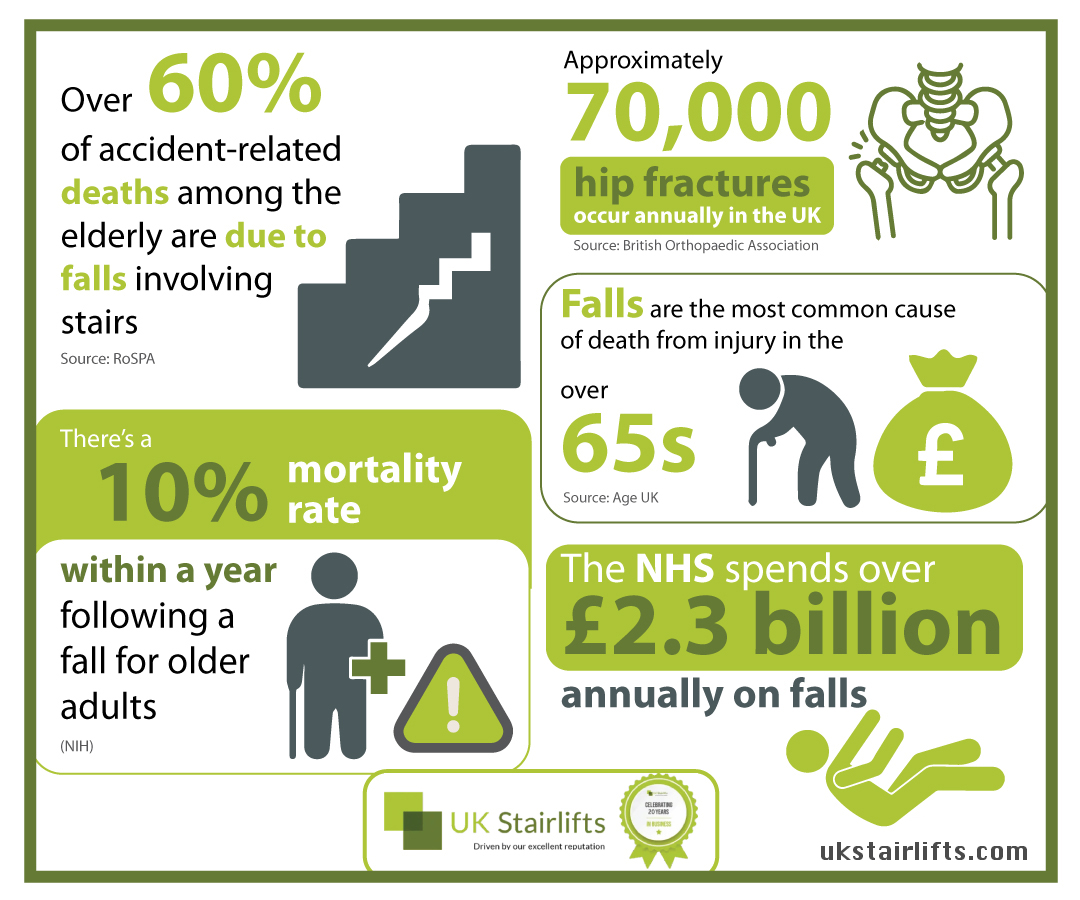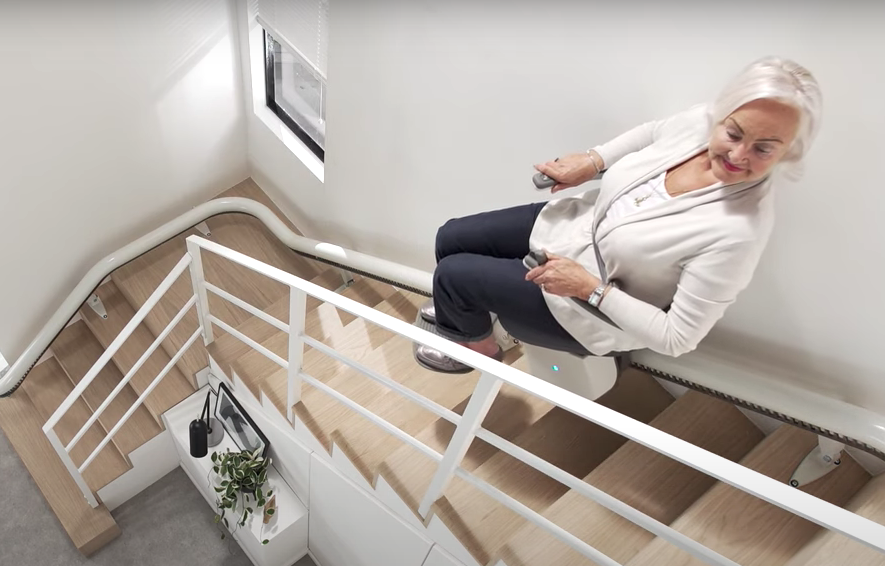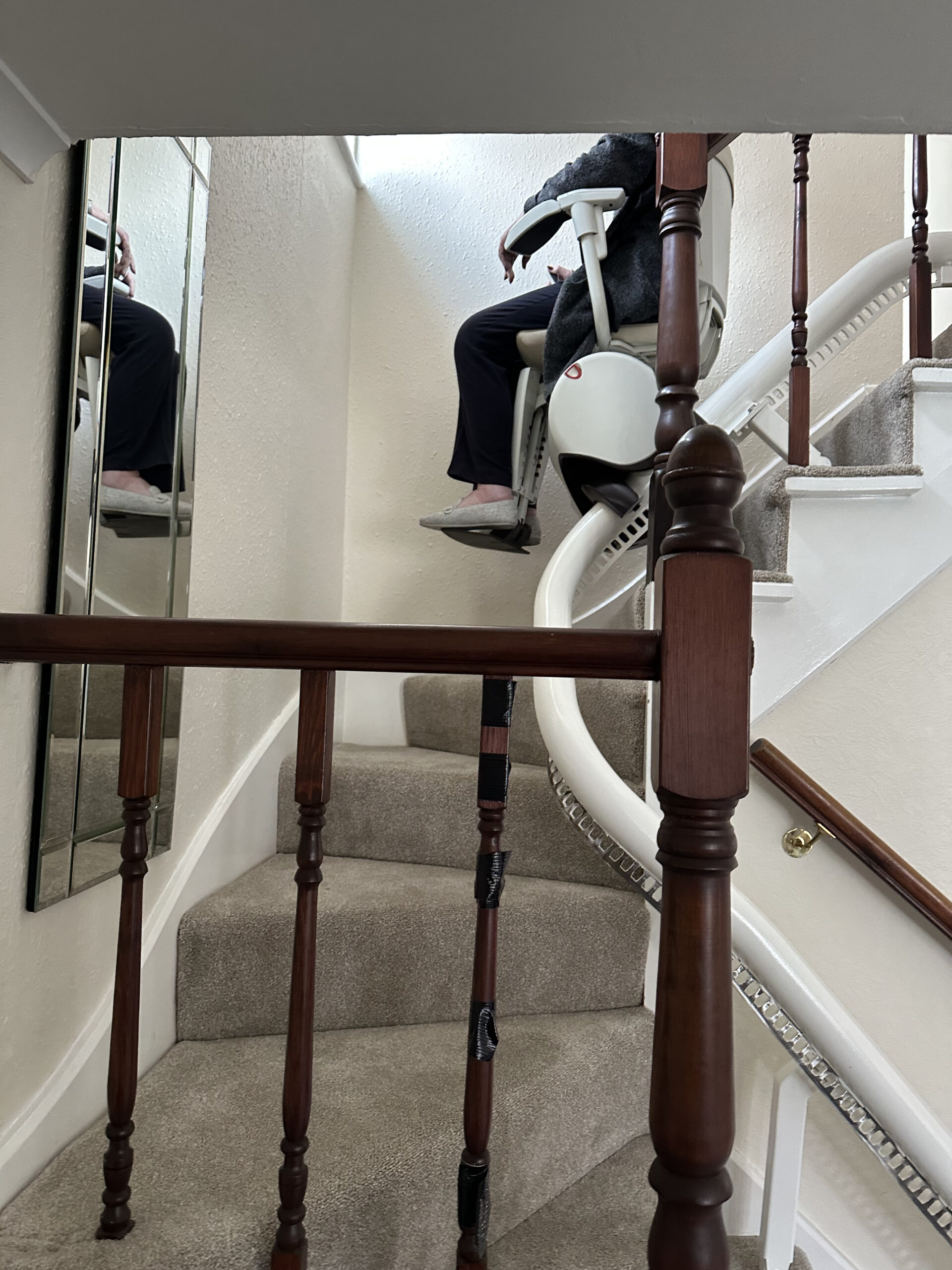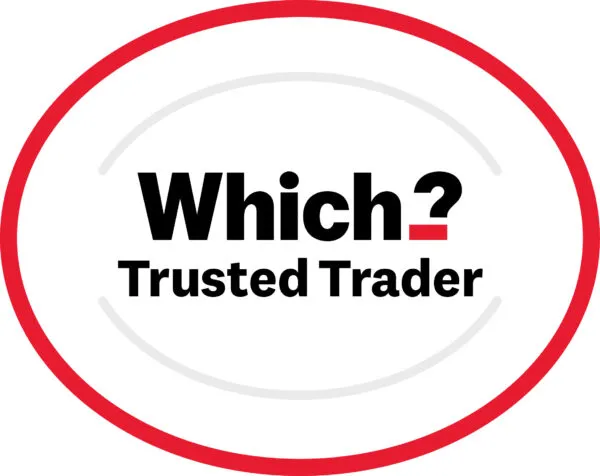
What are the 8 signs you need a stairlift? According to The Royal Society for the Prevention of Accidents, 700 people die each year on stairs and falls are the single biggest cause of accidental injury, and the largest cause of accidental death to the over 65’s.

In our experience of stairlift installation, we’ve had many customers say they wish they had a stairlift fitted much sooner. Many too, have had a stairlift fitted after a fall where the fall has limited their mobility.
Falls are on the rise too, and a study by charity Age UK showed that 1.2 million more people now claim they are struggling to climb the stairs since the first lockdown in March 2020.
Some maintain that the staircase is a beneficial form of exercise for the elderly in their home, especially if they have little other physical activity. However, a stair fall can be catastrophic and even fatal for the elderly. It can lead to further mobility issues, and even the need to move into a care facility.
We know that most accidents in the elderly are the result of falls from stairs, steps or even from standing on a chair with over 60 per cent of deaths resulting from accidents on stairs. So when the stairs are such an obvious danger to the elderly, it’s important to notice when an accident becomes more likely.
8 Signs You Need A Stairlift – Fall Prevention

Prevention is better than cure, as the saying goes, and there’s a number of actionable steps (no pun intended) you can take to avoid mishaps on the stairs.
As we age, we become more prone to losing our balance through sudden movements. We are also more prone to injury with a lower level fall, too, with having more brittle bones and muscle loss. This combination means special care should be taken around stairs.
- Keep floor spaces clear and clean of any obstructions
- Repair damaged carpet, or carpet rails which have lifted or with lifted screws
- Make sure hallways and staircases are well lit
- Avoid attempting to climb on chairs for DIY repairs, for example.
- Use grab rails / have them professionally fitted
- Make sure hand rails on staircases are secure
- Have emergency contact devices fitted in your home – telecare monitoring services, personal alarm, mobile phone etc. in the case of a fall to contact someone.
A fall in the home might not necessarily mean a fatal injury. However, often a fall can be a bigger issue if you are unable to alert someone of your accident, and are incapacitated long enough for your condition to worsen.
You can significantly reduce the risk of a fall by taking these preventative measures. Make sure you have assistive devices in your home and can contact someone in an emergency. Have regular health check-ups and review any medication you are on.
Certain medications have side effects which can effect your balance and co-ordination. Regular health check-ups and regular exercise including balance related training such as Yoga/pilates can be good to maintain strength in your legs and good balance and co-ordination.
8 Signs You Need A Stairlift

Often it is a fall which alerts you to the need for a stairlift. However, it’s much better if you can foresee the issue to avert a fall or a break in the first place. A stairlift can make your home safer and help you avoid unnecessary dangers in the home before they arise.
Here’s our top 8 signs you should be considering getting a stairlift.
1. Your mobility needs have changed
This is the most obvious one and if you suddenly need a walking aid, for example, this can mean you’ll need some assistance on the staircase too. If you have had a fall this is often when you’ll start using a cane/frame to help you walk, for example.
2. A recent discharge from hospital
often is a major signal that your mobility needs have changed. Pay attention to your occupational therapist is your mobility is affected and consider mobility aids in the home when necessary.
3. Being afraid of the stairs/pain climbing stairs
If you’re afraid of the staircase, it’s a sign that you’re starting to be unsteady on your feet. Falls can have a significant impact your wellbeing, leading to fractures, hospital visits if they arise and in some cases stair falls are fatal for the elderly. So if you’re starting to be weary of the staircase, it’s time to take some action. Additionally if you are experiencing pain when climbing the stairs, it could be time for a stairlift.
4. You’re out of breath when climbing the stairs.
This is a big warning sign and although you may be able to manage the stairs still, breathlessness can lead to dizziness, which is dangerous on the staircase. You can black out and find yourself have taken a fall.
5. Your family are worried about you on the stairs.
Don’t discount your family if they are starting to have concerns about you on the stairs. None-one likes to admit their mobility is declining. But it’s as well to be vigilant of the signs before you are forced to admit it.
6. It is taking you longer to climb your stairs.
If you’re taking much longer to climb the stairs than you used to, it may be a sign you could benefit from the safety of a stairlift.
7. You’re having trouble seeing the staircase.
If you’re having trouble with your vision, it could be dangerous climbing the stairs unless you can correct it. Wrong foot placement can be dangerous on the staircase for the elderly and it can lead to a fall.
8. A recent diagnosis/health change
Any health deterioration can result in problems arising on the stairs. Low blood pressure, Parkinsons, Alzheimers, visual impairments and Osteporosis can all have an effect on your ability to move safely. A bone condition such as osteoporosis can mean you’re more vulnerable to a fall, too and more likely to fracture a bone during a fall.
Summary
So there are 8 signs you need a stairlift and of course there could be other signals that a stairlift is a good idea. In many cases, a stairlift is a good idea simply to relay your fears when a loved one’s health is deteriorating. It can give you and your family member the peace of mind knowing they are safer on the stairs if the staircase has become, or is likely to become an issue.
A stairlift is a much better option if you’re already spending time with an elderly family member to keep them safe or because you’re worried about them. Stairlifts are designed with safety in mind so that you or a loved on can maintain independence in the home.
A stairlift is a large investment and there are often reasons to delay or avoid facing the difficult decision of whether to install a stairlift. But many of our customers say they wished they had invested in a stairlift earlier, particularly when faced with the decision after a hospital visit or a fall which a lift could have prevented.
Here at UK Stairlifts we are passionate about helping people with their mobility needs in the home. So whether you want a new or reconditioned stairlift, we are here to help. Give us a call on 0800 046 3438 or visit our contact page and leave a message.


